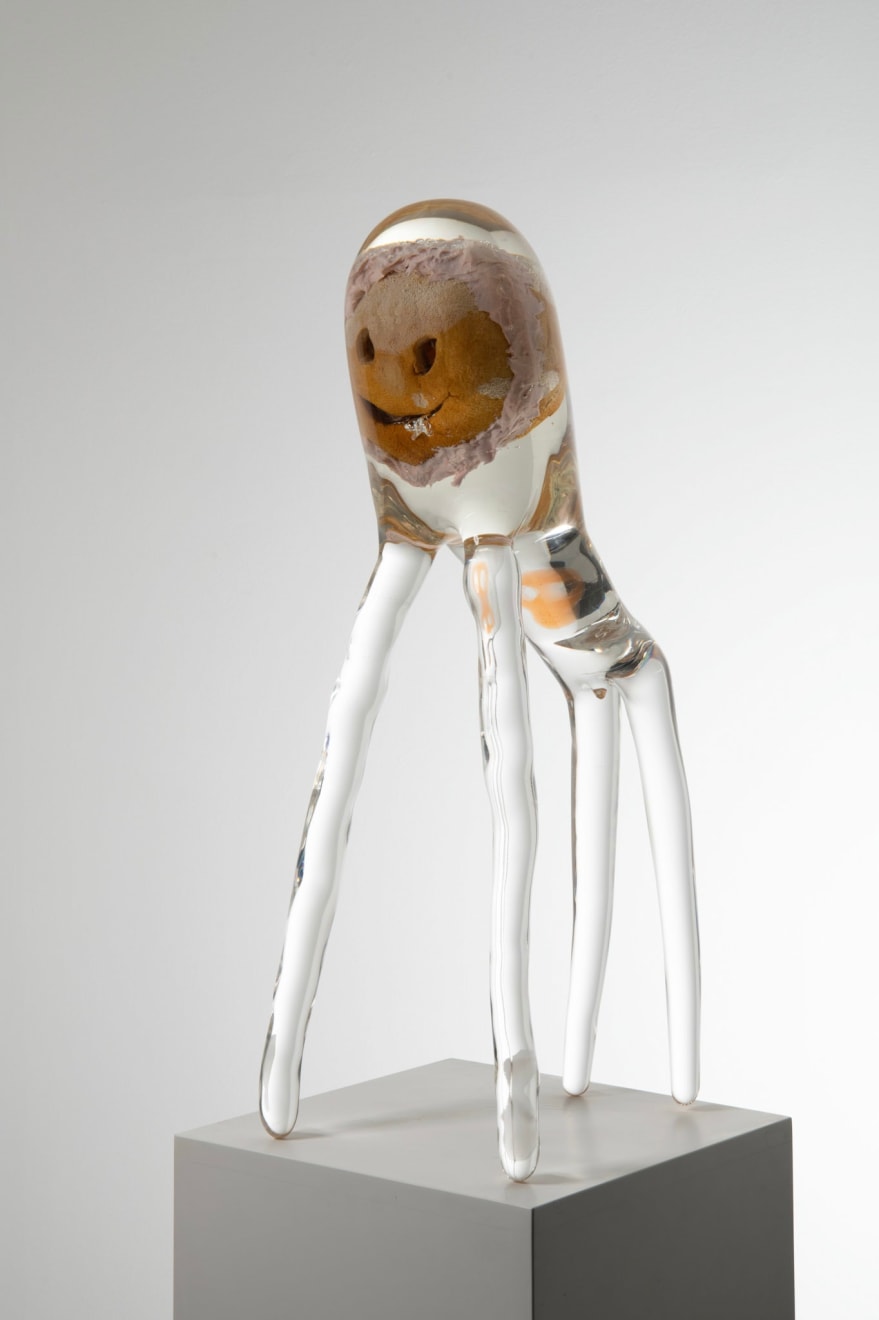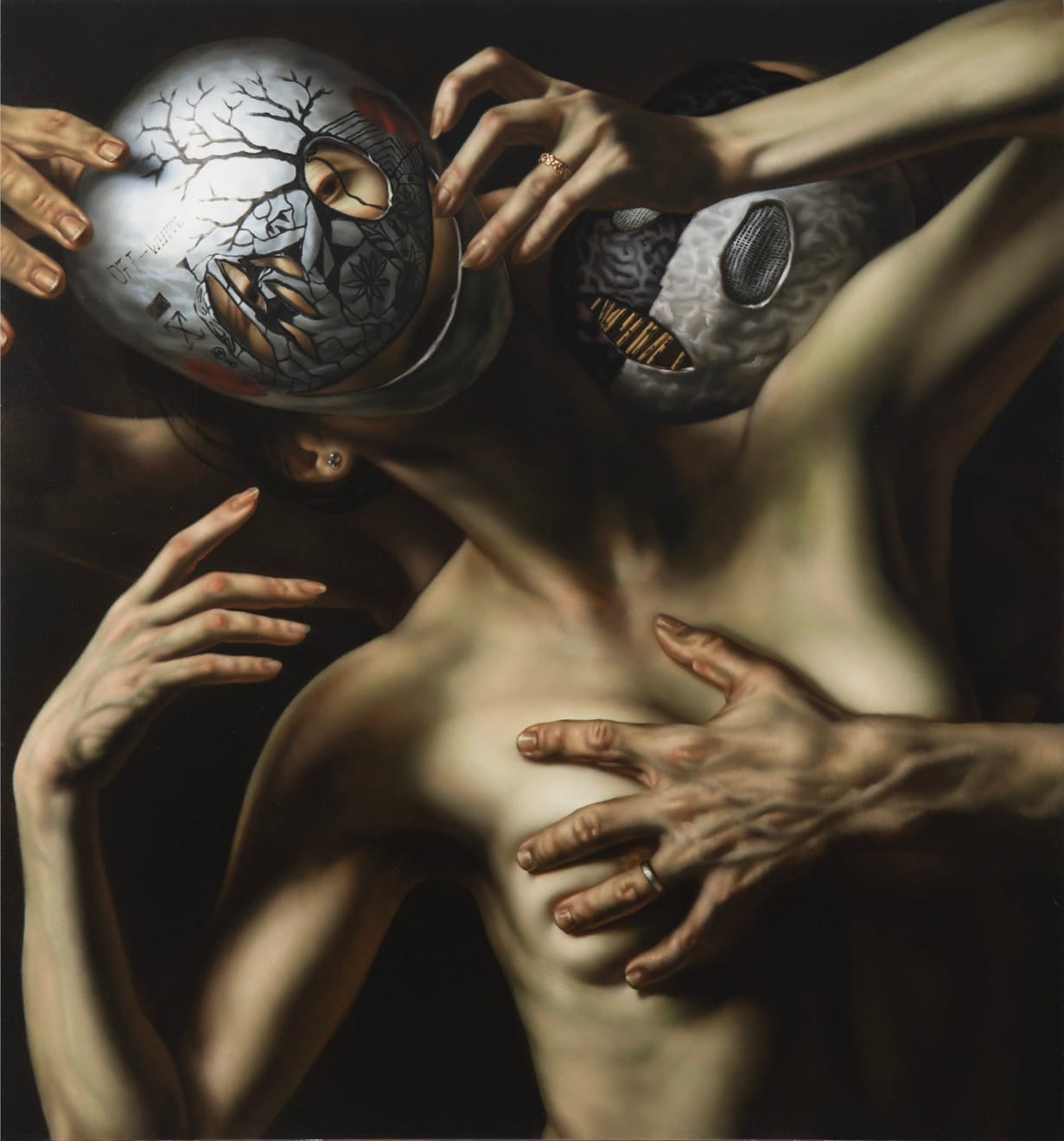Ma_Scary - guided tour of the exhibition: With Karma Al-Mukhtar, Karel Balcar, and Matěj Hrbek
We cordially invite you to the first of three guided tours of the exhibition
Ma_Scary
19 June from 17:00
The exhibition will be guided by Karíma Al-Mukhtarová, Karel Balcar and Matěj Hrbek.
Patrik Adamec / Karíma Al-Mukhtarová / Karel Balcar / Radka Bodzewicz / Eva Fajčíková / Matěj Hrbek / Tomáš Jetela / Jiří Marek / Petr Nikl / Marcela Putnová / Lucie Rosická / Jan Sakař / Sota Sakuma / František Skála / František Antonín Skála / Timo / Jakub Tomáš / Jakub Tytykalo / Jindra Viková / Jan Vytiska / Moemi Yamamoto
Masks - ritual objects that underline, hide or change identity
of its wearer. They were most often used to protect oneself or to interact with what transcended oneself - forces of nature, spirits, demons or gods. Their origins lie in ancient history, and although their purpose and form have shifted and changed in meaning over time, they remain a part of people's everyday lives today. The exhibition Ma_scary combines the original masks of natural peoples with those found in the work of contemporary visual artists in a single space. In the second plan, it also opens up themes such as tradition, horror or disguise.
Curated by Radek Wohlmuth
WE ASKED ALL THE AUTHORS WHAT "MASKS" MEANS TO THEM, BELOW YOU WILL FIND SOME OF THE ANSWERS:
Karima Al-Mukhtarova: 103 (from the Inner Feeling series), 2024
In my work, I focus on the socialization process of the individual and identity. I’m interested
in how society influences us and our beliefs. Is it possible to step back from our social
environment and draw strength from within ourselves? Are concepts like good, evil, truth,
and falsehood real?
Each of us wears masks, but they aren’t enough to cover the other parts of the body that
speak for us. Body language is the most honest language. Even if we learn to largely control
it, we’ll never be able to do so completely. Most often, our feet give us away. Our face can
express up to ten thousand expressions; its upper part is more often associated with positive
emotions than the lower part.
In my work, I try to uncover these hidden layers of human communication and identity.
I explore how our body and behavior are reflected in social contexts.
Karel Balcar: The mask is related to identity. We can use it to discard or cover up our existing identity and/or to adopt another. However, the mask also functions as a mirror—it not only embodies our transformation but also alters the surroundings, which seem to reflect the mask back. It is a tool for transitioning to another world, different relationships, and new contexts.
Matěj Hrbek: The human shape, typically the last thing we can see, becomes transparent due to epoxy, revealing yet another layer. However, it’s merely an analogy to the most commonly used emoticons, concealing a plethora of emotions—often indistinguishable due to radical
stylization. Further complicating the quest for authenticity is a skull levitating within the chest.
I’ve borrowed the title from the lyrics of ‘Comfortably Numb’ by Pink Floyd.


